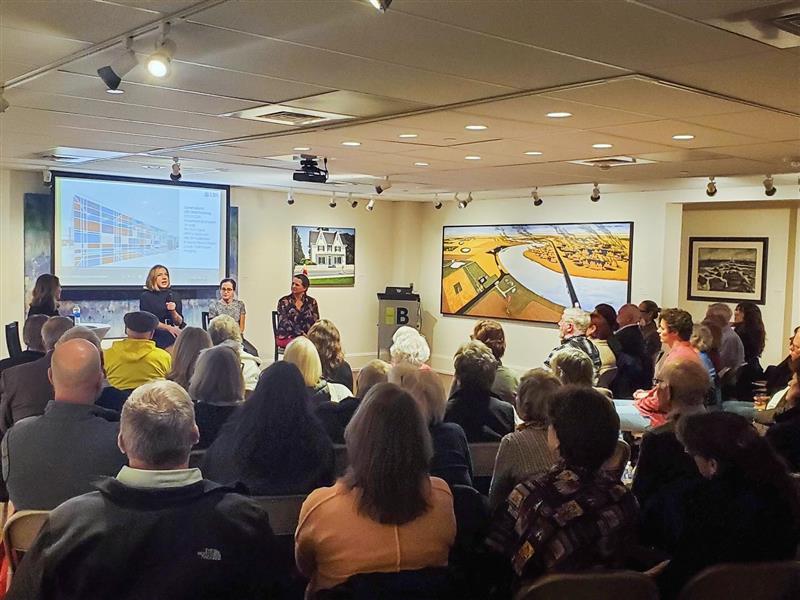
The Bank of America recently loaned dozens of pieces of artwork to the Biggs Museum of American Art for its current exhibition “The Wyeths: Three Generations” through its “Art in our Communities” program. | COURTESY OF THE BIGGS MUSEUM OF AMERICAN ART
When most people think of viewing fine art, their minds travel to the biggest cities in the world with the most prestigious museums: the Museum of Modern Art in New York City, the Louvre in Paris, the National Gallery in London.
But some of the world’s biggest corporations are actually leading holders of fine art, as well. That includes Bank of America, which through its “Art in our Communities” program, recently loaned dozens of pieces of artwork to the Biggs Museum of American Art for its current exhibition “The Wyeths: Three Generations.” The exhibition, which opened to the public in early November 2023 and features pieces by American artists N.C. Wyeth, his son, Andrew Wyeth, and grandson, Jamie Wyeth, runs through Feb. 19, 2024.
“I think corporations can be very good stewards of art,” said Sandra James, Biggs’s Deputy Director and Director of Philanthropy and External Relations, also noting that more than 6,000 people have visited the Dover museum for this exhibition alone. “We are very grateful to the Bank of America for lending us this exhibition and we welcome partnerships with corporations to share art with the public.”
On Feb. 7, the Biggs also hosted representatives from Bank of America as well as Capital One and UBS for a sold-out program featuring a panel discussion about “The Art of Corporate Collecting.” The event included Jennifer S. Brown, Bank of America’s in-house art curator, who said fine art in business spaces can have a slew of benefits to the holder, visitors and staff who see works of art in their workplace every day.
“It doesn’t have to be a van Gogh or Picasso for people to appreciate they work in a place that cares enough and is successful enough to add to the physical environment and work space,” she said, noting that some employees actually have pride for those works of art. Actually, she noted, researchers have found some evidence that viewing visual art can help reduce cortisol levels, an added bonus for anyone who works in an office environment.
“People care about what they see. They care about their environment,” Brown said. “No one wants to work in a sterile environment.”
She explained in a phone interview with Delaware Business Times that it took decades — aided by historic mergers and acquisitions that ultimately led to the creation of today’s Bank of America corporation as we know it — for the company to amass a fine art collection including more than 35,000 items. Some are displayed in corporate office spaces. Some can be found at bank branches, where Brown said new openings and remodels also offer opportunities to feature reproductions of art by contemporary artists. And then some, like the pieces by the three generations of Wyeths, go on loan to regional museums like the Biggs.
“At some point, someone looked at this and said, what can we do with it? It’s such a rich resource, we wanted to share it with the public,” she said.
That thought led to the creation in 2008 of the Arts in our Communities program, which also provides a stipend to the museums receiving the exhibitions to put on the show and pays for shipping of the art itself.
“Our hope is these shows are enough of an appeal that it really helps bring in a lot more viewers than normal,” Brown said. And, she said, art collecting isn’t just for corporate giants — but it is important for businesses and their leaders to dedicate thought and effort into how they decorate their spaces.
“[Businesses] don’t have to waste a lot of money or spend a lot of money,” Brown said. “Find out about local artists in your area or local galleries in your area and start with what you love.”
This post was originally published on this site be sure to check out more of their content







